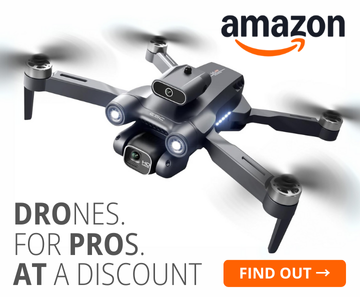 illustration: Bing AI
illustration: Bing AIFor younger listeners, the decline was even more noticeable. People aged 15-24 listened to the radio for an average of 1 hour and 15 minutes per day in 2023. This is 19 minutes less than five years ago but one minute more than in 2022. This suggests that signs of stabilization are emerging among younger audiences.
| Age Group | Average Daily Listening Time (2023) |
|---|---|
| Overall | 2h 13m |
| Youth (15-24) | 1h 15m |
| Seniors (60+) | 2h 51m |
Seniors, historically the most loyal radio listeners, have also started moving away from the medium. From 2015-2020, their listening time remained stable, but since 2020, it has started to decline. In 2023, it stood at 2 hours and 51 minutes per day – the lowest in recorded history.
What is driving this trend? Primarily, changing media consumption habits. More people are turning to streaming services, podcasts, and on-demand content. While younger audiences prefer content tailored to their interests, seniors, despite their loyalty to radio, are also beginning to embrace new technologies.
Radio Reach. Still a Mass Medium, But in Long-Term Decline
Despite shifts in audience habits, radio still reaches a vast portion of society. In 2023, 82.4% of Europeans listened to the radio weekly. This is 3.6 percentage points less than five years ago but identical to 2022. The decline has slowed, but generational differences remain evident.
Young people are harder to attract to traditional radio. In 2023, radio reach among 15-24-year-olds was 72.9%. This marks a 7.6 percentage point drop over five years but, interestingly, a 0.3 percentage point increase compared to 2022.
- 82% of Europeans listened to the radio weekly in 2023.
- 73% of young Europeans (15-24 years) listened to the radio weekly.
- Compared to 2018, overall radio reach declined by 3.6 pp.
- Among young people, the decline was 7.6 pp over five years.
The main driver of this trend is the growing popularity of digital platforms and new audio content formats. While radio remains widespread, it now competes with podcasts, streaming services, and social media.
Public Radio Losing Listeners but Still Leading
Public stations face greater challenges than commercial radio. In 2023, the weekly reach of public stations was 43.1% – 4.6 percentage points lower than five years earlier. However, as with the overall radio market, the decline has slowed – between 2022 and 2023, there was no change.
The biggest challenge for public media is attracting young listeners. Among 15-24-year-olds, the weekly reach of public radio was 28.1% – a 4.6 percentage point drop in five years. Moreover, this age group saw a 3 percentage point decline in just one year.
| Indicator | Data (2023) |
|---|---|
| Weekly reach of public radio | 43% |
| Weekly reach of public radio among youth | 28% |
| Average market share of public radio | 38% |
| Average market share of public radio among youth | 24% |
| Main radio station in 56% of European countries | Public |
What does this mean for public broadcasters? It is increasingly difficult to attract younger listeners who prefer alternative sources of information and entertainment. However, most of Europe’s top radio stations remain public – 56% of markets are still dominated by public broadcasters.
The Future of Radio. What’s Next?
Data from the EBU Media Intelligence Service – Audience Trends: Radio 2024 report shows that radio remains a significant medium, though its position is gradually weakening. Declining listenership is most pronounced among younger age groups, though recent signs of stabilization have emerged.
Challenges facing European radio:
- How to retain younger listeners? Radio struggles against streaming platforms and social media.
- How to adapt content to changing audience habits? More people listen online, but in some countries, streaming data is not yet fully reflected in research.
- How to sustain public radio? Market share declines raise questions about the future funding of public broadcasters.
Radio still reaches millions of Europeans every day. However, data shows that the traditional form of reception is gradually losing significance. This means that radio broadcasters – both commercial and public – will have to find new ways to reach their audiences.
The introduction of digital technologies is changing the way audiences consume radio. Platforms such as DAB+, podcasts, and live audio streaming provide greater choice and better sound quality. In many countries, the transition from analog FM to digital DAB+ is already in an advanced stage. Radio must also compete with smart voice assistants and content recommendation systems.
The full Audience Trends: Radio 2024 report is available on the European Broadcasting Union (EBU) website.
COMMERCIAL BREAK
New articles in section Media industry
Advertising market 2025. Poland, Europe and the World
Marcin Grządka
The global advertising market is growing by 8.8% in 2025 and will reach a value of 1.14 trillion dollars. The industry result in Europe records slightly lower dynamics, at the level of 5.8%. In this comparison, Poland performs clearly above the average. We will record an increase of 8.9% this year and a value of 18.56 billion PLN - estimates WPP Media in the annual report "This Year Next Year".
The print media market 2025. Three global trends
Krzysztof Fiedorek
The market value is 359.53 billion dollars, yet the erosion is visible to the naked eye. The decline for newspapers will amount to -2.3 percent. Despite this, print retains strength: it generates 76 percent of subscription revenues and enjoys 82 percent consumer trust. The future of the industry is defined by hybrid strategies and niche specialization.
Journalism in the age of AI. Why people prefer humans over machines
Krzysztof Fiedorek
Only 12% of people accept news created solely by AI, while 62% prefer those written by humans. At the same time, only 19% notice labels indicating the use of artificial intelligence, while younger audiences ask AI to explain the content to them. These are the findings of the Reuters Institute report on artificial intelligence in media.
See articles on a similar topic:
Gen Alpha avoids tough topics. What young people are really looking for
Krzysztof Fiedorek
Generation Alpha prefers humor in 46% of cases, while only 12% are interested in news and political topics. Young people and children consciously limit what negatively affects their emotions - according to the report "Gen Alpha Unfiltered" published by GWI.
Deepfake Blurs Truth and Falsehood. Human Perception Research
KFi
Studies indicate that only 60% of deepfake images can be correctly identified by humans. As AI begins to dominate content production, the problem of differentiation fatigue grows – users lose confidence in assessing the authenticity of information and fall into cynicism.
Investigative journalism in Europe. Newsrooms face pressure
KFi, Newseria
Media and political representatives point to the difficult situation of investigative journalism in Europe. Newsrooms are reluctant to invest in this segment due to high costs and the large amount of time and effort required. Most of all, however, they fear legal proceedings.
Russian Propaganda. Debunk.org Report on Moscow's Disinformation Scale
BARD, PAP Mediaroom
In 2022, the Russian Federation allocated approximately 143 billion rubles to mass media (equivalent to 1.9 billion US dollars), exceeding the planned budget by 25%. For the current year, the Kremlin's budget for this sector is set at 119.2 billion rubles (1.6 billion dollars).





























